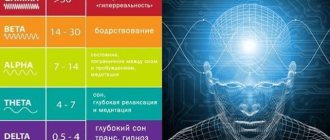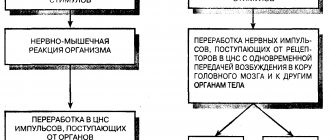The term “resource state” is often encountered by those interested in psychology and NLP. But every person needs to know about it. It is also worth learning to enter a resource state and live in it. This will help you use your internal energies to solve simple and complex problems.
It is especially important to learn the resource state technique for people who have lost motivation. You are probably also familiar with this situation. And everything seems to be fine, but there is no strength left to move forward. And there is no longer any desire. It seems that it will not be possible to achieve success. What to do in this case? How to replenish resources?
What is resource state
In psychology, the resource state does not have a clear definition. In simple terms, a resourceful state manifests itself when a person has enough strength, energy, desire and motivation to solve current problems, do everyday things and move more effectively towards their goal. Emotionally, it feels like elation, interest, when energy is overflowing and you want to get down to business as quickly as possible, take on new projects and prove yourself.
Component #1: FUN
Having fun is the ability to enjoy even simple things: a cup of aromatic coffee, a pleasant aroma, or the image of your body in the mirror. And it is the state of pleasure that affects a woman’s resourcefulness.
How happy is she, satisfied with herself, with her surroundings here and now? How much does she enjoy being in certain circumstances? It is this ability to receive pleasure that is one of the main parameters of a woman’s resourcefulness.
I strongly recommend that each of you learn to discover your ability to enjoy your life and have fun.
How to enter a resource state
The resource state has two key aspects: in order, as coaches say, to enter the resource state, it is necessary to pay attention to physical and psychological health.
Photo: Pexels.com
On the physical level
With the physical aspect, everything is quite simple. To enter a resourceful state, monitor your physical health. Maintain a proper sleep schedule, get enough sleep and rest.
Learn to control the so-called happiness hormones - dopamine, serotonin, oxytocin and endorphins. We wrote about how to do this in a separate article. By the way, if you constantly feel tired and depressed, you can take a blood test for hormones.
Maintain fluid balance and try to adhere to the principles of proper balanced nutrition so that the body receives all the necessary vitamins and elements.
Photo: Pexels.com
Play sports and exercise, or better yet, choose a type of yoga that suits your lifestyle.
Don’t forget to take care of yourself: visit a cosmetologist on time, undergo examinations by specialists, and monitor your health.
On a psychological level
Most difficulties arise precisely at the psychological level. A psychological resource state is a state of self-confidence, cheerfulness and optimism, and motivation.
Another practice from NLP
This exercise allows you to turn even negative experiences into resourceful ones. It transforms anxiety into calm, fear into confidence. This is done as follows.
- An actual problem is formulated. For example, “I’m worried about how my colleague N began to treat me.”
- Then it must be associated with a certain visual, symbolic image. For example, this could be the image of a gray ball, a thorn, or a swamp.
- At this stage, it is necessary to remember some situation that was filled with positive emotions. These can be any circumstances associated with happiness or success: passing an exam brilliantly, lucratively concluding a contract, traveling, a wedding. With your eyes closed, you should relive it, experiencing pleasant feelings again and again.
- Imagine a mental “amplifier” (like a sound amplifier) somewhere near you. It will play the role of an experience amplifier. Feel how pleasant feelings have become even greater and more expressive with the help of this device.
- Imagine an imaginary sun in the solar plexus area - bright, omnipotent. It is the center of positive experiences.
- After this, you should confidently place the image of the problem, indicated at the beginning of the exercise, in this place. Watching how anxiety, fear or other negative experiences turn into something very positive, easy.
- Transfer attention to objects of external reality. Save the received resource by including it in current activities.
There are no restrictions on the use of methods to restore a person’s resource state. The techniques can be used daily. But to make them more effective, it is recommended to alternate them.
Techniques that will help you enter a resourceful state
Modeling
Try to “deceive” your brain and body: imagine that you have already entered a resourceful state, are full of energy and are in a good mood. Smile, gesticulate, take the so-called winner's pose - stand up straight, raising your arms up and slightly tilting your head back, as if you were happy that you received a valuable prize.
Meditations
Meditations have been talked about so often lately that they are also beginning to be perceived as something mystical. However, a number of scientific studies show that meditative practices actually have a beneficial effect on a person’s emotional state and help to enter a resourceful state.
Photo: Pexels.com
Maintaining lists and checklists
One of the best ways to get into a resourceful state is to make several lists: a list of your achievements and what you are proud of; a list of things you feel grateful for; a list of good things you look forward to in the future. Try to make filling out such checklists a daily practice: at the end of each day, remember all the good things that happened to you.
Photo: Pexels.com
Praise yourself
We often scold ourselves for mistakes, remember awkward situations in which we literally wanted to fall into the ground. Instead, get into the habit of praising yourself, remembering moments in which you felt like a winner, helped other people, and were the center of attention.
Find a Gratitude Stone
One of the methods that the author of the bestselling book “The Secret” Rhonda Byrne describes is an effective gratitude technique that helps accumulate strength and energy to enter a resourceful state. To do this, you need to find a small round stone and mentally charge it with your warmth and say words of gratitude for everything you have.
Find a hobby
Find something that brings you pleasure and energizes you. Doing what you love is the best way to enter a resourceful state. Cycling, pottery and floristry are some of the most popular activities that help relieve stress and relax.
Photo: Pexels.com
Watch your speech
Get rid of negative words and parasitic words. The phrases “I don’t have the strength”, “I’m tired” and other negative formulations only take away strength. Use positive affirmations, make a new habit of starting every morning with the words: “I am well rested and full of strength and energy,” and ending the day with the words: “This night I will sleep wonderfully and wake up refreshed.”
Focus your attention
According to American business coach Anthony Robbins, “Where focus goes, energy goes.” Therefore, try to focus on pleasant things and positive moments.
Photo: Pexels.com
Ways to use resources
A person can waste energy, or he can invest it profitably. He can earn them in an honest way, by working on himself; or he can do it at the expense of others. Waste usually refers to the untargeted use of resources and their destruction. For example, a person feels good on a day off. He planned to take up his hobby, but instead he watches TV all day. In this case, we can talk about reckless spending.
There is also such a type of use of personal resources as contribution. In this case, reserves are used for a specific purpose, in order to achieve a particular result. As one of the options, they can be spent to replenish the currently missing resource.
What prevents you from entering a resource state?
There are several limiting factors that may cause you to fail to experience a resourceful state.
Limiting Beliefs
As a result of childhood psychological trauma and traumatic events in adulthood, many people develop false beliefs. “I’m not worthy of love”, “I’m not good enough for this job”, “I can’t do it because I’m never lucky”... Try looking inside yourself to understand where these negative beliefs come from, and then write down the facts on a piece of paper , which refute them, for example: “I am a smart, good, kind, attractive person who deserves love.”
Photo: Pexels.com
The pursuit of excellence
There are two sides to perfectionism. First, the desire for excellence makes us develop and motivates us. Second, perfectionism develops fear of failure, a constant feeling of dissatisfaction and thoughts that things could be better. Don't dwell on your past mistakes and allow yourself to make mistakes in the future because we are all human and cannot do everything perfectly.
You may also like these materials:
Meditation for beginners: how to meditate correctly
How to make a wish come true
Cyberlofing: how social networks help increase productivity during the workday
Question: “Why do I need this?”
When you have decided on a goal, ask yourself the question: “Why do I need this?”
This is a very important question, take your time. Take a sheet of paper and, in a calm environment, write down everything that comes to you in response. What will change in your life when you achieve what you want? How will you change? What will these changes be? Will your character, your personal qualities change? What will you learn, and what do you have and can do now? How will this affect your family, your friends, everyone around you? Perhaps you will see not just a goal, but your mission. What would your mission be then? Describe it in a few words.
When you find your mission, you receive an endless source of energy. There is no longer any need to force yourself to do something, but you do it because you really like it. All obstacles along the way become simple tasks that can be solved.
Pay attention to the words you used to describe your goal. Sometimes behind a simple word and desire there is something more than we are used to seeing. Behind the goal of earning a lot of money is the desire to be free and benefit yourself, your family, and the people who will interact with you. Behind the goal of meeting love is the desire to share love, intimacy and your tenderness - to become a source of love and inspiration. And behind the goal of getting an education, there is a great desire to learn, act actively, and gain new living experience.
Take a close look at the words you used to describe your goal. If they describe a fixed state: “love”, “money”, “education”, “gratitude”, then look at them in a new way, at what actions are behind them: “love”, “learn”, “grate” and etc.
Component #4: TRUST
The next component that affects resourcefulness is trust. Answer yourself the questions: “How much do I trust myself?”, “How much do I trust men?”, “How much do I trust God and this world?” If you go through life with fear: “At least a brick doesn’t fall on your head,” or there are a lot of thoughts in your head like: “What if it weren’t this,” “What if that,” “What if he cheats on me!”, “ What if he betrays me,” “What if tomorrow’s work is not the same,” and so on and so forth, then what should we expect?!
Determine your level of trust
Ask yourself how much you trust the world, yourself, men, women, colleagues, and so on. I advise you here to go through all areas of your life and analyze what/what you trust and who/what you don’t.
How can every woman become a resource? For example, waking up every morning with pleasure and gratitude. Her condition is read by those around her. And remember, fortune is not a business card that needs to be presented to everyone with the inscription: “I am Irina. I trust the world. I live in harmony, gratitude and pleasure.” This needs to be experienced and felt in order to then broadcast it to others.
What do you think a woman can create with her worries, fears and concerns? Does it create resources or empty itself, remaining at the “broken trough” of mistrust?
My dears, the factors I described are just some of the components and should not be limited to them. But they are basic and you should start your path to fullness with them.











